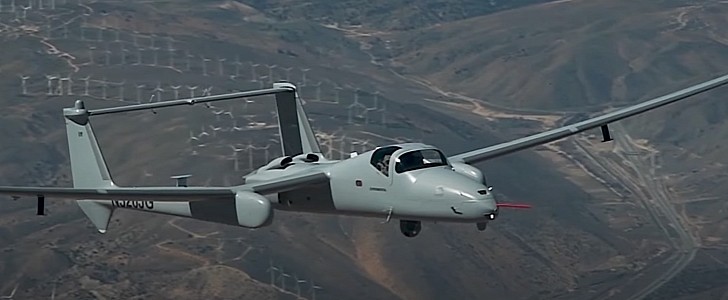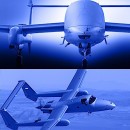Generally speaking, the word drone kind of leaves humans out of the equation. Sure, pilots are most of the time needed to get these things to where they’re needed, but drones usually do not allow them to climb on board. Except for the Northrop Grumman Firebird.
Officially described as a multi-sensor aircraft, the machine can fly both while controlled from the ground, or with pilots manning its actual controls. Thanks to a clever design, the front end of the drone can be swapped to accommodate either the hardware needed for ground control, or a cockpit for pilots.
The switch between the two can be performed according to the company behind this winged machine in under two hours.
In an attempt to prove the thing’s prowess, Northrop Grumman just ended last month an aerial tour of the United States with a crewed Firebird. The plane traveled for about 9,000 miles (14,480 km), zigzagging across the nation’s states and performing a number of stops, until it came to a halt in Key West, Florida.
Once there, the Firebird was used to perform a number of operations that involved the use of high-definition EO/IR sensors, multi-spectral sensors, and an AIS receiver.
“Our flights showcased one of its key differentiators – the ability to position the system in a manned configuration, then convert to autonomous operations for persistent ISR in under two hours,” said in a statement Jane Bishop, vice president and general manager, autonomous systems, Northrop Grumman.
“At each stop, plane-side briefings provided customers the opportunity to see first-hand the operational versatility of the platform, its large sensor bay, and rapid configurability for changing mission needs.”
The Firebird first flew about a decade ago. It’s main role is to conduct Intelligence, Surveillance and Reconnaissance (ISR) missions, and it can do so for 30 hours at a time, and from an altitude of 25,000 feet (7.6 km).
According to its maker, the type of sensors required for its missions can be swapped in just 30 minutes.
The switch between the two can be performed according to the company behind this winged machine in under two hours.
In an attempt to prove the thing’s prowess, Northrop Grumman just ended last month an aerial tour of the United States with a crewed Firebird. The plane traveled for about 9,000 miles (14,480 km), zigzagging across the nation’s states and performing a number of stops, until it came to a halt in Key West, Florida.
Once there, the Firebird was used to perform a number of operations that involved the use of high-definition EO/IR sensors, multi-spectral sensors, and an AIS receiver.
“Our flights showcased one of its key differentiators – the ability to position the system in a manned configuration, then convert to autonomous operations for persistent ISR in under two hours,” said in a statement Jane Bishop, vice president and general manager, autonomous systems, Northrop Grumman.
“At each stop, plane-side briefings provided customers the opportunity to see first-hand the operational versatility of the platform, its large sensor bay, and rapid configurability for changing mission needs.”
The Firebird first flew about a decade ago. It’s main role is to conduct Intelligence, Surveillance and Reconnaissance (ISR) missions, and it can do so for 30 hours at a time, and from an altitude of 25,000 feet (7.6 km).
According to its maker, the type of sensors required for its missions can be swapped in just 30 minutes.











